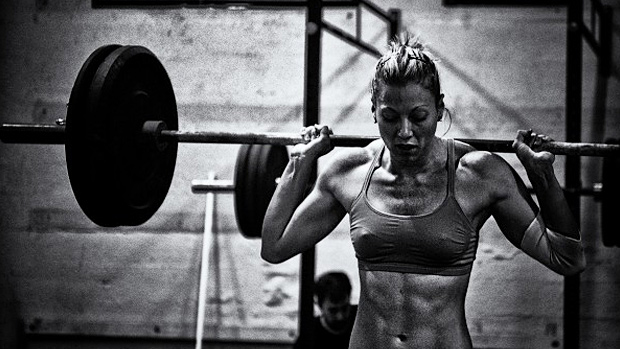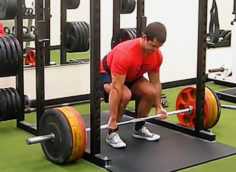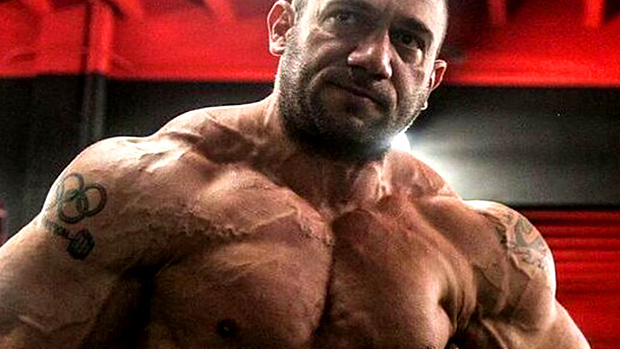Be honest. Are you giving the same attention to different kinds of muscle contractions during your training? If not, start now if you want to be able to defend yourself.
Fighting doesn't just require strength. You have to absorb, sustain, and express violent forces through all planes of motion. One of the most neglected kinds of contraction is the isometric. Most sports are dynamic in nature, but isometric strength will give you an efficiency advantage and keep you safe from injuries.
Think about grappling. Suppose your opponent is trying to lock you into submission. Naturally, you only have so much time to escape. Otherwise, you're done. Being strong isometrically will make you more resistant in these uncomfortable positions and provide you with more time to react.
Now imagine getting punched in the stomach. How does your core react? It contracts hard in an isometric fashion, right?
These are only a couple of examples, but there are a thousand more reasons why isometric strength training should be part of your arsenal.
Here are some of the best exercises to help you turn your body into a piece of iron. Do most of these near the end of your workout AFTER your main strength and explosive lifts of the day, unless directed otherwise.
This is one of the most effective anti-flexion exercises for building a strong posterior chain. It'll help you drive your strikes through the hips, thus making them deadlier. It will also make your opponents feel light as a feather when lifting them for a takedown.
You need two strong, elevated surfaces that can support your body weight, like a couple of benches. Arrange them in parallel formation. Lay between them, resting your heels on top of one and your upper back on top of the other. Keep your whole body completely straight and your hands in line.
Try to do three sets of one minute, taking as much rest as needed in between. If you can hold it properly for this long, it's time to start using some extra resistance. Pick up a plate and put it on your belly, right above your lower back.
Keep progressing like this if you're able to hit one full minute without losing your form.
Loaded carries are an incredible tool for developing thick and rigid core musculature that'll protect you from strikes and render your spine bulletproof to injury. The Zercher's unique benefit is the way it challenges your whole upper back.
Wrap the bar with a soft material like a hip thrust pad, place it in the crooks of your elbows, and unrack it.
Keep your elbows high, your core super tight, and walk at a controlled pace. Avoid leaning back to compensate because that will tax your spine and not your muscles.
If you've never done this before, loading up with around 20-30% of your body weight is a good starting point. Do three sets of 30 meters. If successful, try 40 and 50 in your next sessions, respectively.
If you can carry it in good form without stopping, increase the load and start over at 30 meters, repeating the pattern.
This one's technically a dynamic exercise, but it includes an isometric component as well. Successive striking speed is a necessary skill to develop, and the demands it places on the body are oscillatory in nature. Do this exercise in the plyometrics/ballistics part of your workout.
To achieve technical prowess in throwing multiple strikes quickly, you have to teach the shoulders, obliques, and hips how to switch between contracting and relaxing really fast. That's exactly what this exercise does. Plus, adding an isometric component before explosive reps helps recruit up to 10% more muscle fibers.
Assume a staggered stance and hold a med ball close to your chest with both hands. Have a partner stand in front of you and place his hands on the ball for resistance. Push back as hard as humanly possible for five seconds, keeping in mind that your intended direction is diagonally upwards as if you wanted to throw an uppercut with your trailing hand.
If you don't have a partner, place the ball against a wall for the same effect. When the time is up, do five explosive reps of the same movement, toward the same direction. Make sure you rotate your whole body properly, exactly as you would when delivering real strikes.
Don't let go of the ball at the top; simply retract and repeat as violently as possible. The ball should feel neither light nor very heavy. Do up to four sets of five reps on each side, and take plenty of rest in between.
Strengthening your neck to withstand head strikes is just as crucial as strengthening your core to withstand body strikes. And while it's really hard to condition the neck to absorb circular/indirect attacks, it's certainly possible to make it much more resistant to straight punches.
Tie a band to a stable object at about your own height. Turn your back to it and wrap the band around your forehead. Walk away until you can feel a decent resistance and assume your fighting stance. Stand tall and avoid leaning forward.
Keep it up for 30 seconds. Perform four sets. As you get stronger, add 10 small, in-place jumps after the isometric hold to simulate the shock of a hit.
This is like a side plank that targets the adductors. It'll make your guard position and triangle choke much stronger, improving your overall ground game.
Place a bench beside you. Begin from a side-lying position and rest your top foot on the bench. Now place your forearm on the floor so that your elbow is exactly under your shoulder. Press your leg into the bench so you lift yourself into a side plank position. Lift your other leg until it touches the bottom of the bench. Make sure your whole body is forming one straight line.
No leaning the torso forward and no hinging at the hips. Hold for 30 seconds on each side, then repeat for four to five sets.
If you've never done this before, do the beginner-friendly variation, which is bending your leg and placing your knee on the bench instead. This way, your body makes for a shorter lever and can handle the stress better.
If you're looking for a bigger challenge, switch to placing your top foot in a suspension trainer handle. Being unstable by nature, the suspension trainer will make it that much harder for you to hold still.
The dead hang is an excellent way to improve grip strength. The excellence lies in its simplicity.
Grab the bar with a pronated/overhand grip (palms facing away from you). Your hands should be placed a little wider than your shoulders, and your thumbs should be wrapped around the bar. The full grip has plenty of benefits, including a stronger, safer, more externally rotated position for the shoulders, better activation of the back muscles, and fewer skin tears. Besides, you're mostly using the full grip when grappling an opponent.
Just stay there for as long as possible. After you drop, rest for two minutes and try again. Do three sets total.
If you want to train with a purpose, try this workout: accumulate a total of six minutes of dead hang, but every time you drop from the bar you have to run 400 meters.
This type of "punishment" will keep you honest and make you try harder to hang on. It'll also give your hands enough time to recover for your next try. Adjust the goal time depending on your level.
Program this on a separate day from your lifting if possible, or save it for last. I highly doubt you'll be able to hold anything heavy when you're done!
Get good at this and your opponent will feel like a python is choking him.
Place the ball to the side of your torso and firmly lock it into the guillotine position with your arms. Squeeze as hard as possible. Make sure you're applying the pressure through your forearm. You can choose your favorite guillotine variation.
Since this is a demonstration of exercises, not martial arts, we're not going to elaborate on choking techniques. Simply pick the one you like to use most. Do two sets of 60 seconds each towards the end of your workout.
This is just as much a mental challenge as it is physical. It'll develop your delts' muscular endurance and help you build a vice-like grip.
Grab a pair of dumbbells. Place your legs about shoulder-width apart and extend your arms to your sides, parallel to the ground. Hold the weights with your thumbs pointing to the sky. This reduces the medial head's involvement a bit, but it's a safer variation, especially for people who feel pain or discomfort during standard, palms-down lateral raises.
Hold for 90 seconds, rest for two to three minutes, and do it again for two sets total. Your shoulders will be very tired when you're done, so make sure you don't have any heavy lifting coming up.
To say that isometric exercises are important for fighters (and everyone else) would be an understatement. They'll improve weak links, prevent injuries, and build your mind-muscle connection. Bonus: They don't cause the same amount of soreness that eccentrics tend to create.
Yes, they can be really hard, but the reward is worth it.




